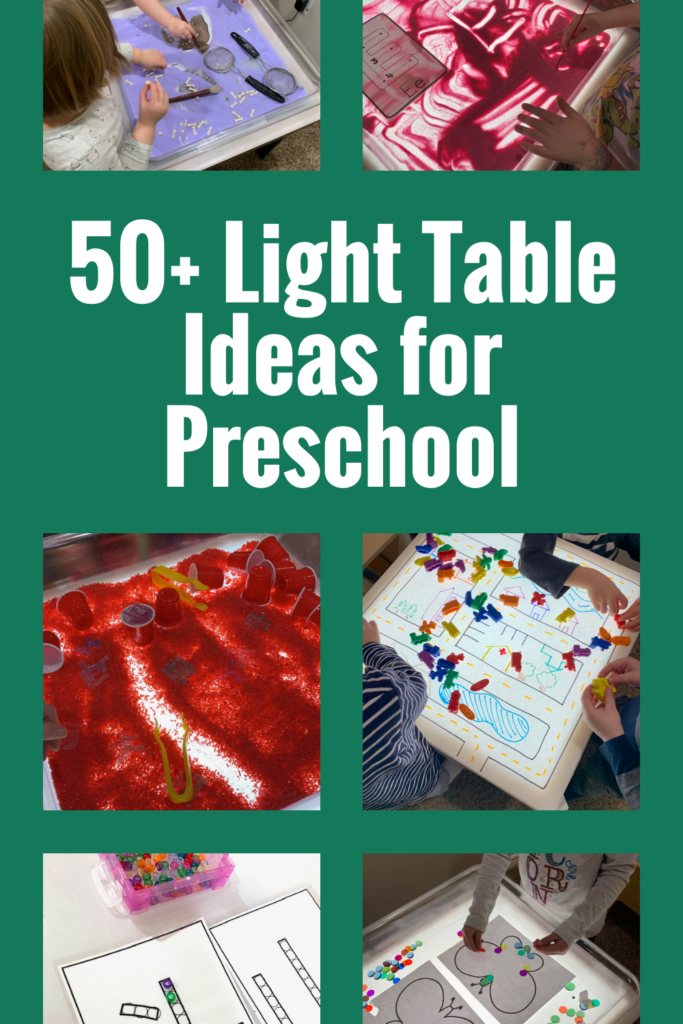The preschool light table is a versatile and captivating tool for young learners. With its soft, colorful glow, it creates an enchanting environment that inspires children’s curiosity and creativity. A light table is not only an inviting visual attraction, but it can also facilitate learning and exploration through play. In this post, we will share 10 exciting activities and toy ideas that are perfect for a preschool light table, as well as explore the benefits and educational advantages of using a light table in the classroom. So, let’s dive in and discover how you can make the most of your preschool light table.
Disclaimer: this post contains affiliate links. When they are used to purchase materials I may receive a small commission at no extra cost to you. I also really appreciate the support you show by using these links. Thank you.
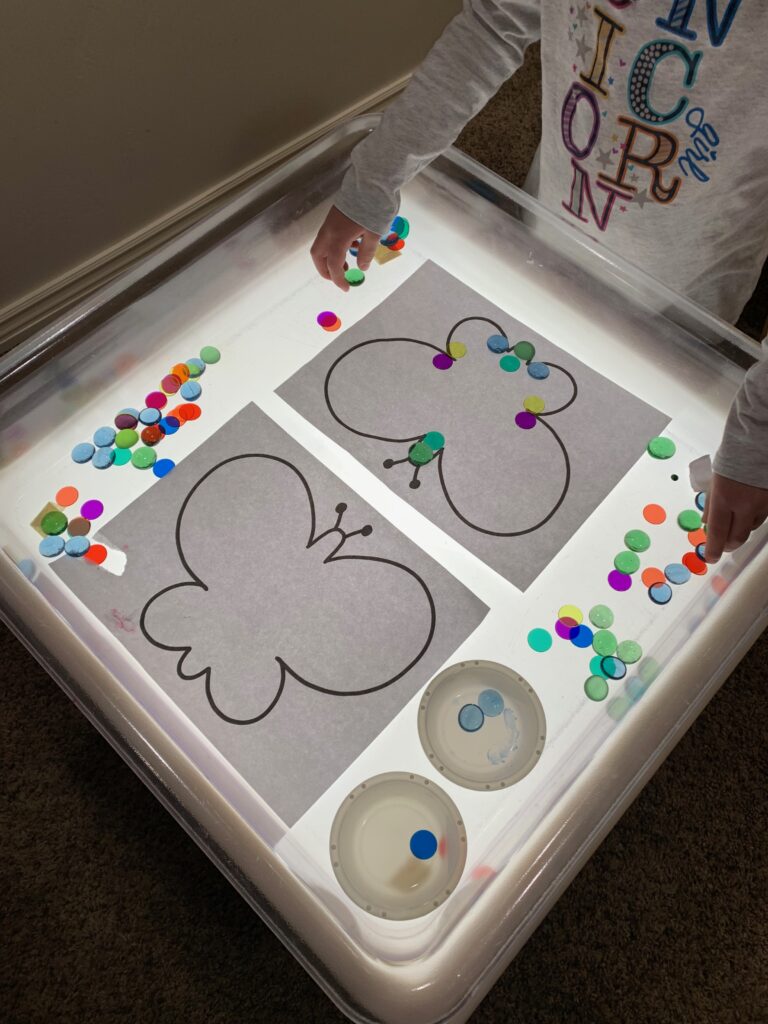
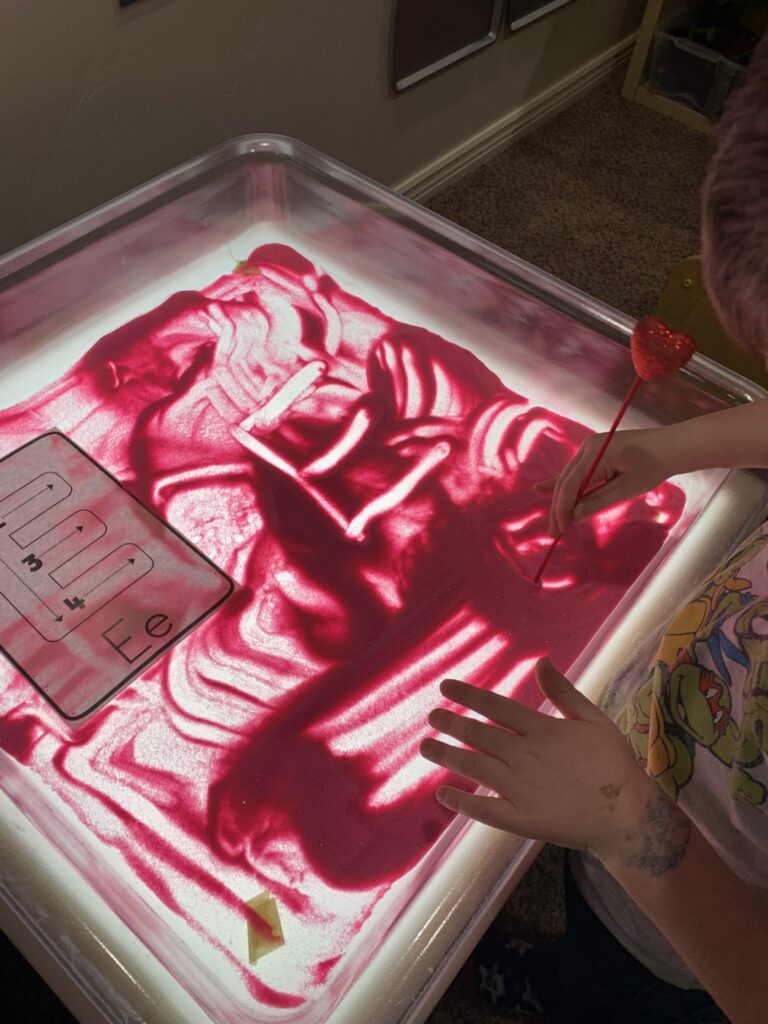
Why use a light table in preschool classrooms?
A preschool light table can be a valuable tool in a classroom, offering a unique and engaging way for children to explore, experiment and learn. The illuminated surface provides a fun and captivating visual experience, making it a perfect way to encourage sensory exploration and hands-on play. Not only is a light table a fun addition to any classroom, but it can also provide countless opportunities for learning. From math and literacy to science and art, the possibilities for activities on a light table are endless. By using a light table, children can learn about concepts such as color mixing, light and shadow, and even create collaborative art projects. Plus, the hands-on nature of light table activities helps children develop their fine motor skills while engaging with the content. In short, a light table can be an incredible addition to any preschool classroom, opening up a world of exploration, creativity, and fun for young learners.
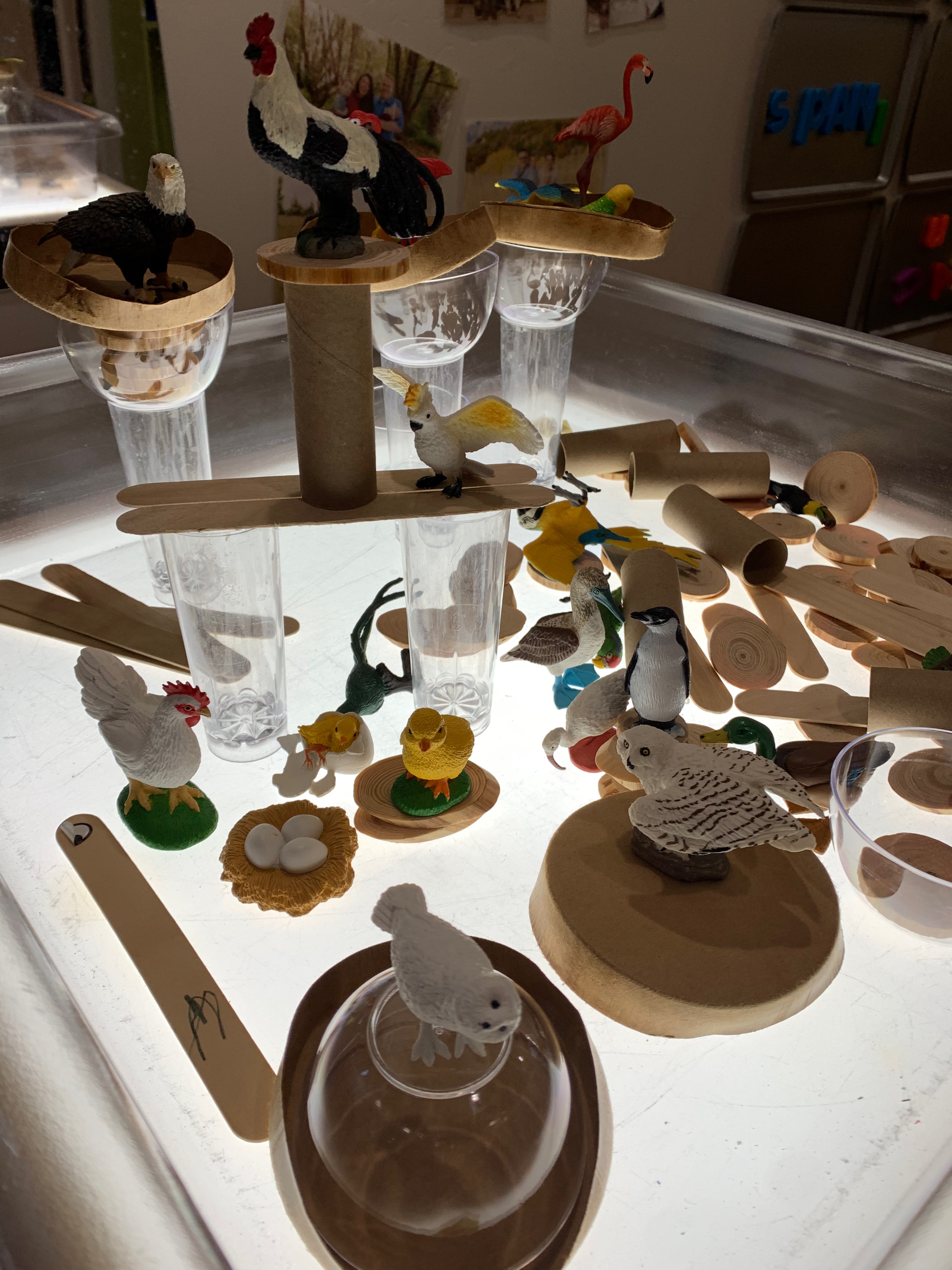
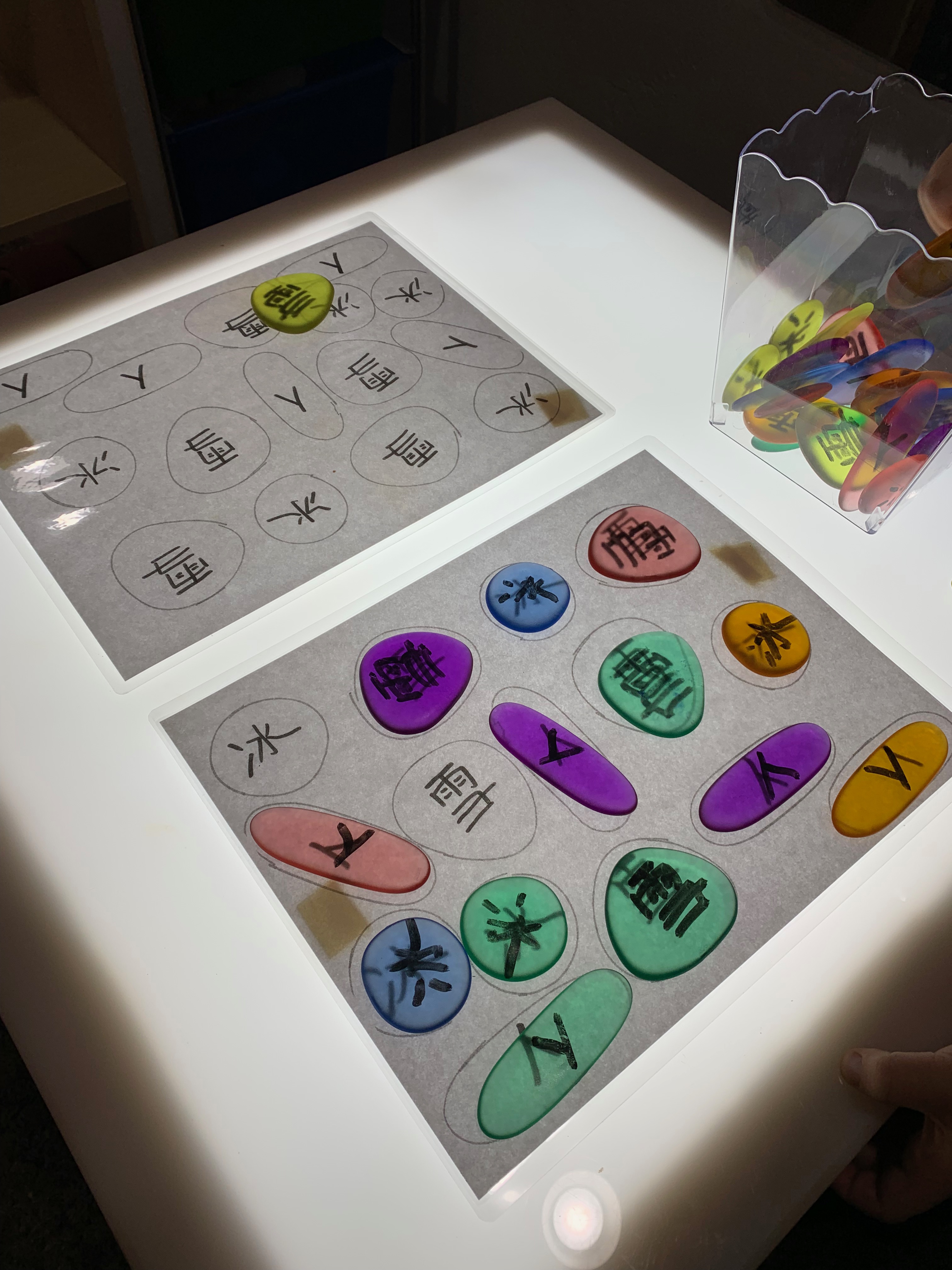
What are the benefits of light table play?
There are several advantages to incorporating a light table into your preschool classroom. First and foremost, light table play helps children develop their visual discrimination skills as they explore and manipulate the various light table toys. This type of play also promotes fine motor skills as children pick up and move objects around the table.
Another benefit of light table play is that it can enhance sensory exploration. The illuminated table allows children to see things in a new light, quite literally! This can make familiar toys and materials feel fresh and exciting, and encourages children to investigate them with their senses.
Furthermore, light table play can help children develop math, literacy, and science skills. Activities like sorting and counting games or creating letters and shapes with translucent materials can promote early math and literacy skills. Science experiments on a light table can also spark curiosity and interest in the natural worl
Overall, incorporating light table play into your preschool classroom can provide a unique and engaging way for children to learn and explore the world around them. So gather your light table toys and get ready to watch your students’ imaginations light up!
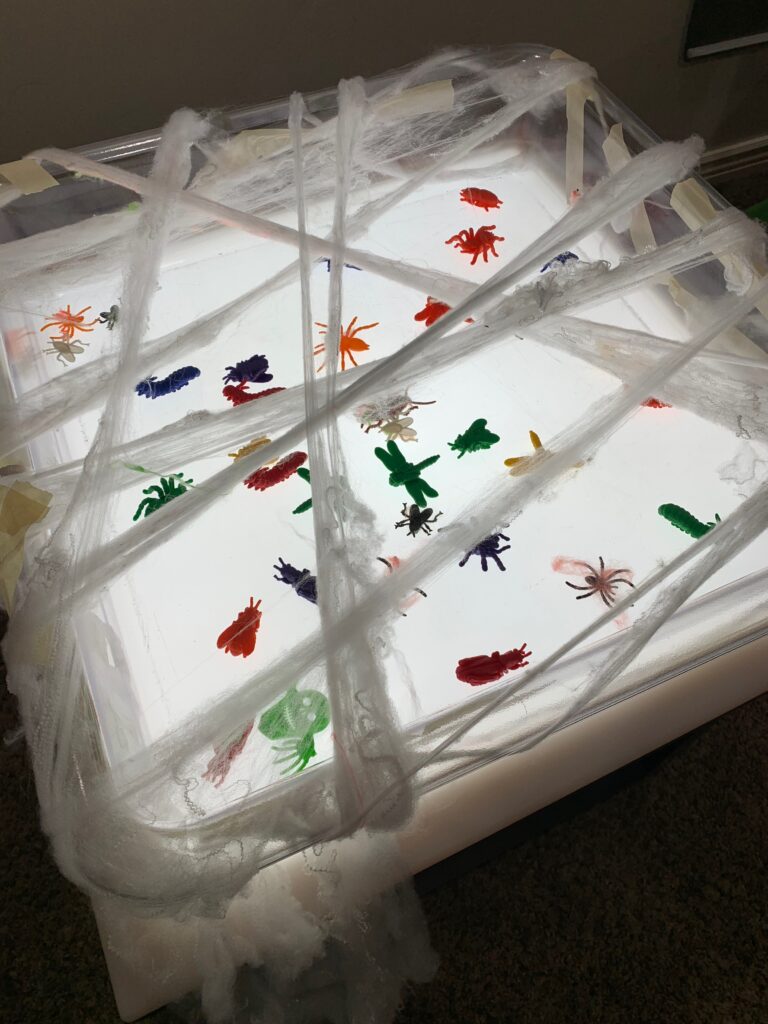
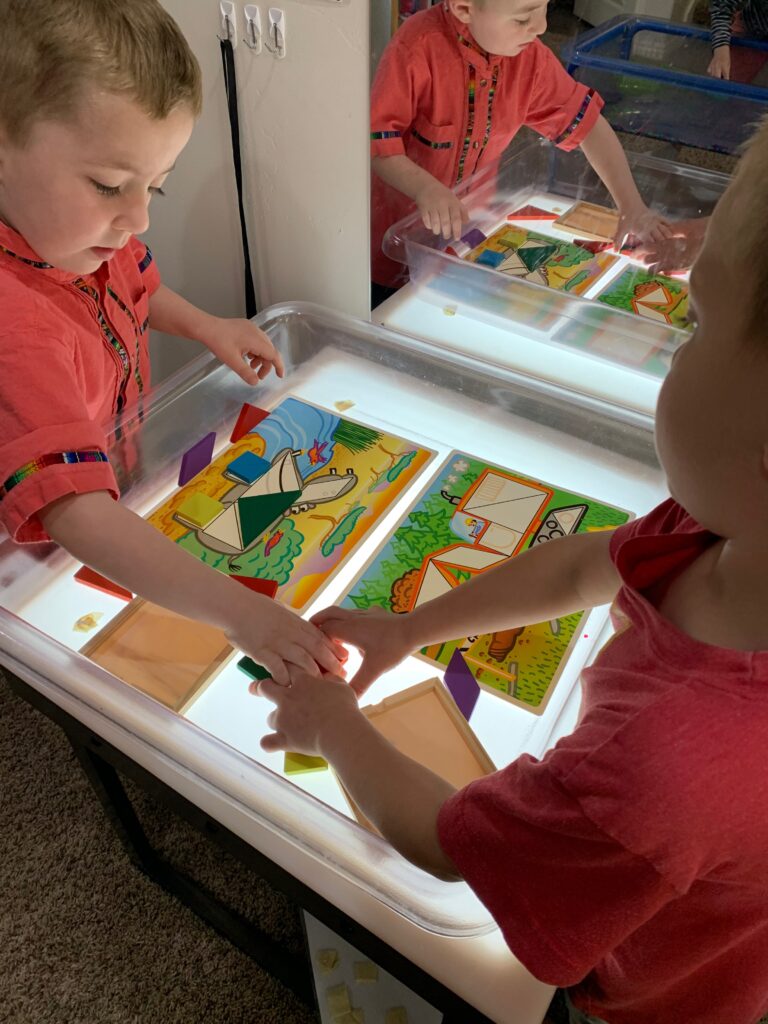
Types of toys that work well on a light table
When it comes to using a preschool light table, choosing the right toys is key. The following toys are all great options for creating engaging, educational activities on a light table.
1. Transparent blocks and tiles – These toys allow children to explore colors, shapes, and light in a hands-on way.
2. Color paddles – Color paddles are transparent cards or tiles in various colors. When placed on the light table, they create a beautiful, glowing effect.
3. Magna-Tiles – Magna-Tiles are magnetic building toys that work well on a light table. Children can create colorful structures that seem to glow from within.
4. Small world play figures – Small plastic figures such as animals, people, and vehicles are great for creating stories and imaginary worlds on a light table.
5. Sand and water toys – Toys designed for sensory play in sand or water can be used on a light table to explore colors, textures, and light.
6. Light-up toys – Toys that light up in various colors and patterns are a fun way to add extra visual interest to light table play.
7. Translucent counters and shapes – Counters and shapes that are translucent or semi-transparent work well on a light table, allowing children to explore symmetry, patterns, and more.
8. Jigsaw puzzles – Children can put together jigsaw puzzles on a light table, creating a glowing picture as they work.
9. Nature items – Leaves, flowers, and other natural items can be placed on the light table for exploration and sorting.
10. Playdough and clay – Playdough and clay can be rolled out and cut into shapes on a light table, or used to create
11. 3D objects that can be lit from within.
Also note, I love to use a large clear tray or bin on top of the light table to hold sensory materials and small world scenes. I found a 20x20inch one from Lakeshore that fit my light table well. I also found a 16×20 inch one on Amazon for half the price of my 20×20 inch one. There are also a variety of smaller sizes if you want to try using two at once or you are doing a smaller table.
Top 10 activities for preschoolers on a light table
Sensory play: Fill the light table with various sensory materials such as colored rice, water beads, or sand for a tactile experience.
Color exploration: Use colored transparent blocks, gems, or beads on the light table to learn about colors and mixing them.
Block building: Use different types of light table toys like translucent blocks or magnetic tiles to build structures that glow in the light.
Shadow play: Use objects like puppets, plastic animals, or figurines to cast interesting shadows on the light table surface.
Shape sorting: Use light table toys like shapes, pegboards, or tangrams for shape recognition and matching.
Number and counting games: Use counting bears, numbers, or ten frames on the light table for counting and simple math activities.
Letter recognition: Use magnetic letters, alphabet blocks, or flashcards for literacy activities like letter matching or spelling words.
Nature exploration: Use real or plastic leaves, flowers, or insects on the light table for science exploration and discovery.
Art exploration: Use light table toys like gel clings or transparent colored paper to create unique art projects that glow in the light.
Fine motor skill development: Use small objects like tweezers, pom-poms, or beads for developing fine motor skills and hand-eye coordination on the preschool light table.
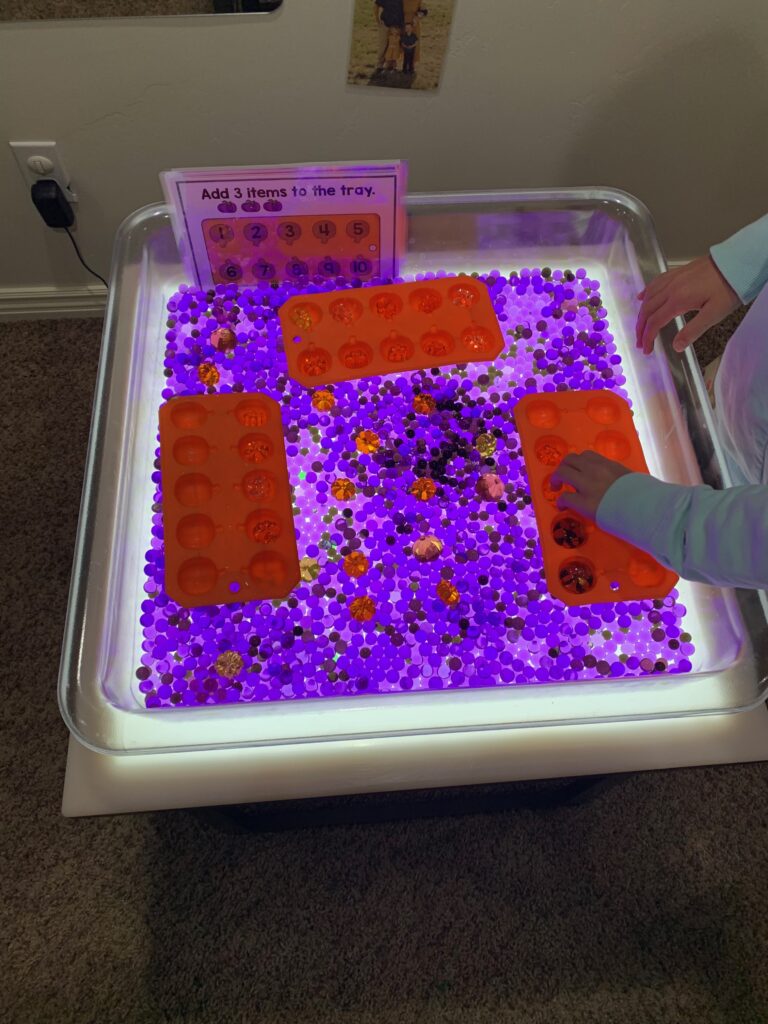
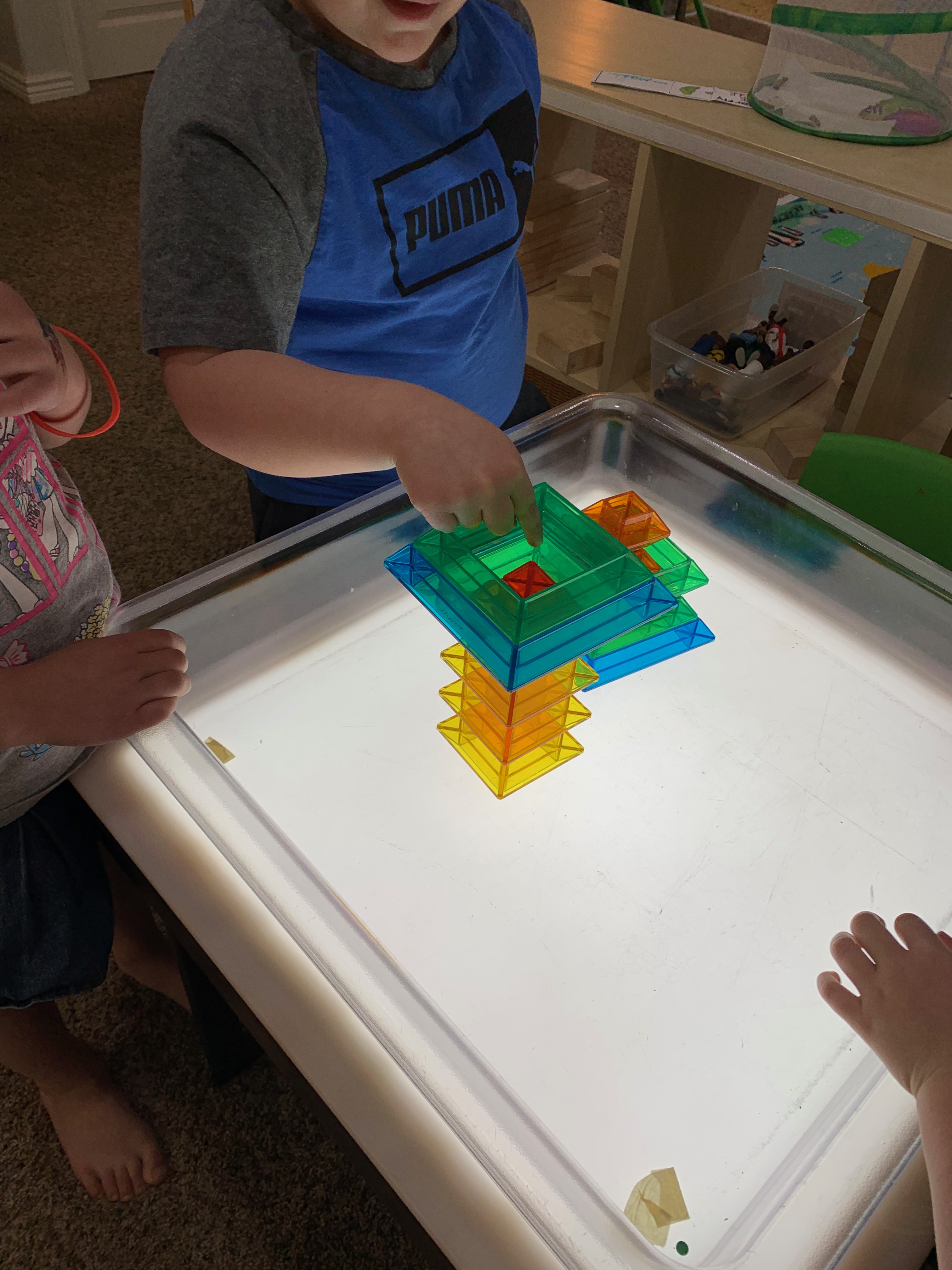
Sorting and sensory activities
Using a preschool light table for sorting and sensory activities is a great way to enhance a child’s learning experience. There are a variety of light table toys that can be used for this type of activity. One popular option is translucent counters in different shapes and colors. Children can use these counters to sort and match, practicing their color and shape recognition skills.
Another fun sensory activity is using different colored water beads on the light table. Children can explore the texture and size of the beads while also sorting them by color. You can also add in different sized scoops and cups for children to use during their exploration.
Incorporating natural elements like leaves, flowers, and shells is also a great way to engage children’s senses. Children can explore the textures and shapes of the items, sorting them by size, color, and shape.
Sensory activities on the light table can also be a great way to promote socialization and cooperation. Children can work together to sort and match, building teamwork and communication skills.
Overall, sorting and sensory activities on the preschool light table provide a fun and engaging way for children to learn and develop important skills.
Counting and math games
Using a light table in your preschool classroom can be a fun and engaging way to help your little learners develop their counting and math skills. Here are some ideas to get you started:
- Number match-up: Place clear plastic numbers on the light table, and have your students match them to their corresponding written numbers.
- Counting beads: Use colorful beads or buttons on the light table and have students count how many there are. You can also have them sort the beads by color, shape, or size.
- Shape sorting: Place a variety of shapes on the light table, and have students sort them into different categories. You can also have them match shapes to their corresponding outlines.
- Number line: Create a number line on the light table using small pieces of transparent tape or plastic numbers. Have students practice counting up and down the line.
- Addition and subtraction: Use plastic tiles or beads to teach simple addition and subtraction on the light table. For example, you can have students add two groups of beads together to find the total.
- Geometry fun: Use magnetic shape tiles or plastic shape blocks to teach geometric concepts like symmetry and patterns on the light table.
By using a light table to teach counting and math skills, you are providing your preschoolers with a fun and interactive learning experience that will help them develop their cognitive abilities. These activities also promote problem-solving, critical thinking, and spatial awareness skills that will help your students succeed in their future studies.
Literacy and language development activities
The light table can be a wonderful tool for promoting literacy and language development in preschoolers. Here are some ideas for fun activities that can help little ones develop their language skills while they play:
- Alphabet blocks: Use alphabet blocks on the light table to help kids learn letter recognition and phonics. Encourage them to build words and spell out their names.
- Sight word search: Write sight words on clear plastic or acetate sheets and have the kids search for them on the light table. This helps with word recognition and reading fluency.
- Storytelling with translucent props: Use translucent props on the light table to create a backdrop for storytelling. Kids can use props to act out their favorite stories and develop language skills as they communicate and collaborate with each other.
- Shadow puppets: Make shadow puppets using cardboard and acetate sheets. Kids can use them to create their own stories and develop their storytelling abilities.
- Phoneme matching: Use translucent letters and images to create a phoneme matching game. Kids can match the sound of the letter with the corresponding image.
- Poetry with light: Use poetry or rhyming books on the light table to encourage kids to read and memorize verses. You can also encourage them to write their own poems or verses and illustrate them using the light table.
These activities help preschoolers develop literacy and language skills in a fun and interactive way. The light table can also be used to inspire imagination and creativity in children as they learn.
Science experiments on a light table
Using a light table to conduct science experiments in your preschool classroom can be a fun and interactive way for your students to explore and learn about the world around them. Here are a few science experiment ideas to try on your light table:
- Color mixing: Place transparent cups or bowls filled with water and food coloring on the light table and let your students mix them to create new colors.
- Exploring shadows: Set up objects on the light table and have your students observe the shadows they create. You can also experiment with different materials and their transparency.
- Sink or float: Fill a transparent container with water and let your students test different objects to see which ones sink and which ones float.
- Animal x-rays: Use transparent plastic or paper to create x-ray images of animals or objects and place them on the light table for your students to observe.
- Magnifying objects: Place small objects, such as leaves or flowers, on the light table with magnifying glasses for your students to explore and observe.
By incorporating science experiments on a light table, you can provide a hands-on approach to learning that engages your students’ natural curiosity and helps them develop critical thinking and problem-solving skills. Additionally, using a light table as a tool for science experiments can introduce students to STEM concepts and spark their interest in future scientific exploration.
9) Collaborative art projects
One of the best ways to encourage creativity and socialization among preschoolers is by having them engage in collaborative art projects on the preschool light table. These projects not only enhance children’s social and emotional skills, but also stimulate their imagination and curiosity. Here are some ideas for collaborative art projects that can be done on a preschool light table:
- Finger-painting: Using non-toxic, washable paints, children can dip their fingers in paint and make abstract designs on the light table. By working together on a large canvas, they can create beautiful and colorful art pieces.
- Stained-glass effect: Provide translucent tissue paper, contact paper and scissors, and have children cut shapes or strips to make a collage that creates a stained glass effect when hung on a window.
- Scratch art: Use black scratch paper, wooden styluses, and colorful LEDs to create fun drawings that can be illuminated by the light table.
- Color mixing: Use watercolors or transparent plastic sheets in primary colors to mix new colors by overlapping them. Children can observe how the colors blend together and make new ones.
- Shadow puppets: Provide black construction paper and wooden sticks to make shadow puppets. Children can use the light table to create shadows of their characters on a white background or a wall.
These collaborative art projects can teach preschoolers the importance of teamwork and communication while having fun and being creative. By working together on a light table, children can explore and express themselves in new ways. These activities help develop fine motor skills, spatial awareness, and cognitive thinking while igniting their imaginations and inspiring future artists.
Developing fine motor skills with light table activities
Fine motor skills are crucial for preschoolers as they form the foundation for many important skills later on in life. Light table activities can be an excellent tool for developing these skills in a fun and engaging way.
Firstly, the use of light table toys itself can help with fine motor development as it requires children to use their hands to manipulate the items on the table. Children can practice gripping, pinching and manipulating small items like beads, buttons and small plastic animals.
In addition, there are specific light table activities that can help with fine motor skill development. For example, children can use tweezers or tongs to transfer small objects from one container to another. They can also use magnetic wands to move metal objects around the table, improving their dexterity and coordination.
Another great fine motor activity on the light table is tracing. Children can use stencils and clear acetate sheets to trace shapes and pictures, using their hand-eye coordination to guide the pencil.
Collaborative activities like creating translucent mosaics or designing and building structures out of clear blocks can also help to develop fine motor skills while also fostering teamwork and creativity.
Overall, using a light table in the preschool classroom can provide endless opportunities for developing fine motor skills through engaging and stimulating activities.
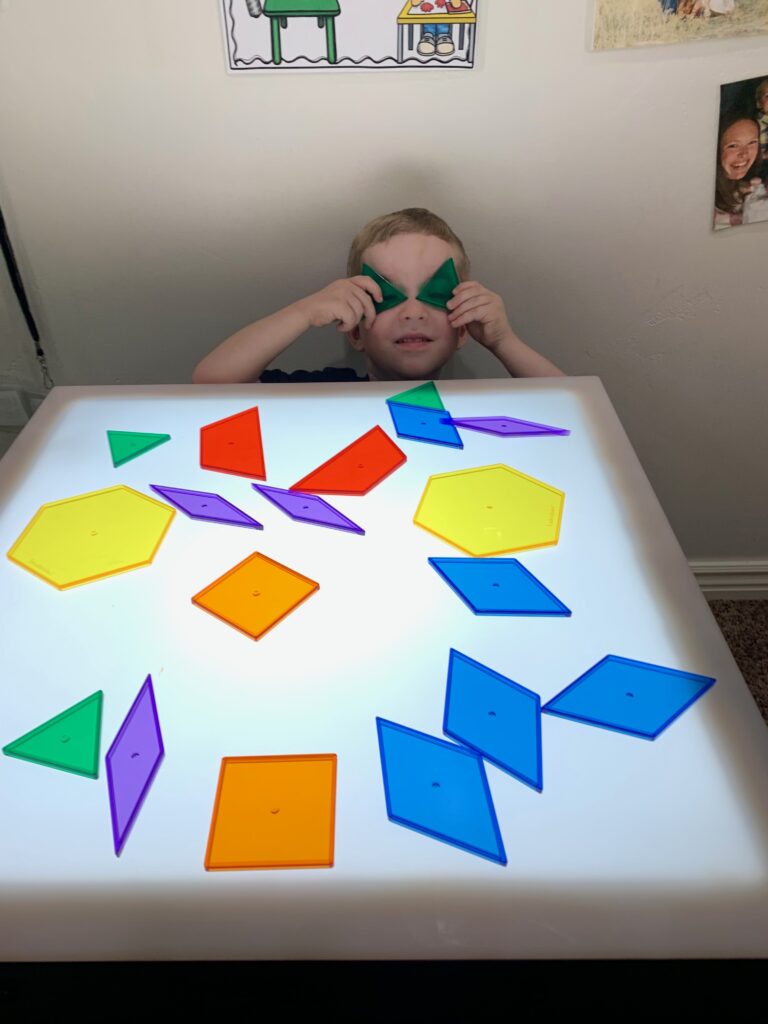
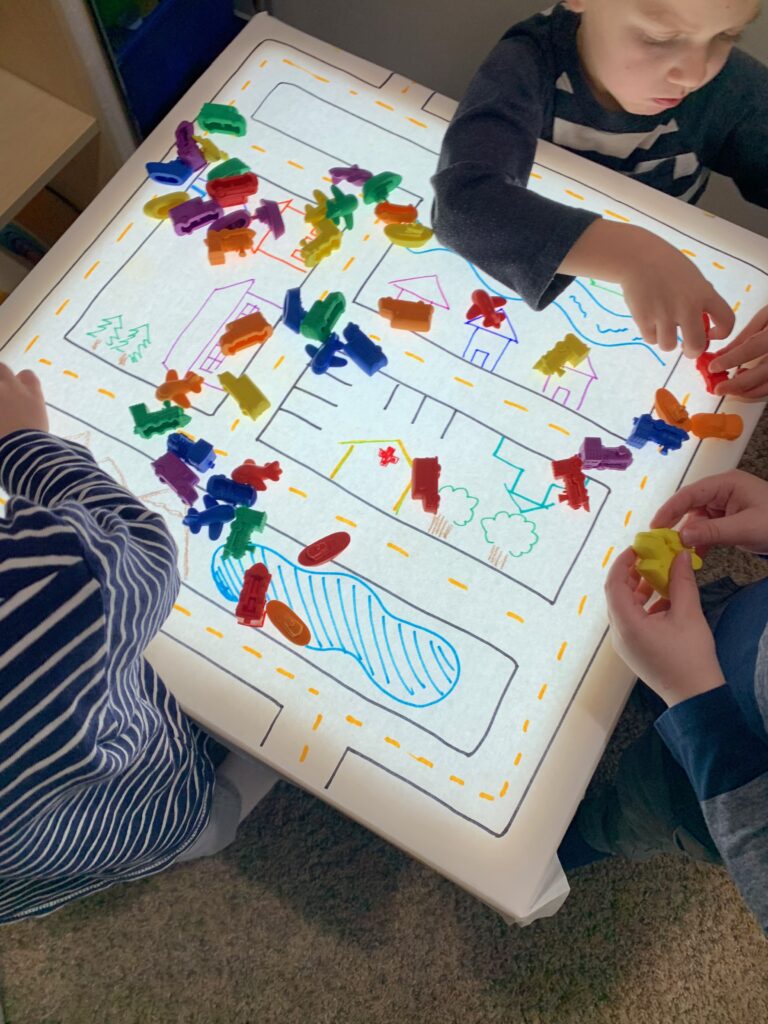
Conclusion
Using a light table in your preschool classroom can enhance your students’ learning experiences in a multitude of ways. From improving fine motor skills to engaging in collaborative art projects, there are endless possibilities for fun and educational activities on a light table. By incorporating various light table toys and activities into your curriculum, you can help your students develop their cognitive, language, and math skills, all while having a great time. So why not add a preschool light table to your classroom today and watch as your students learn and grow in exciting new ways!

